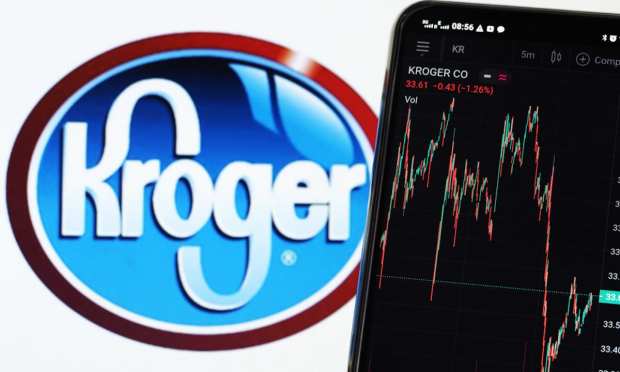Kroger Looks To Parlay Digital-First Growth Into Omnichannel Success

The digital shift has been good to Kroger. The supermarket chain reported strong Q4 earnings on Thursday (March 4), driven by the company’s savvy digital presence as well as its expanded pickup and delivery options. Per the earnings release, digital sales grew 118 percent year over year, an increase from the company’s already strong Q3 digital performance, and delivery sales soared, showing 249 percent year-over-year growth.
Chairman and CEO Rodney McMullen told analysts on a call Thursday (March 4) that the company saw “over 1.3 billion customer interactions across our digital modalities.” Additionally, pickup and delivery options now reach 98 percent of the chain’s customer base. This surge of digital engagement gives the company further opportunities to grow its eCommerce presence as it learns more about its consumers’ online behaviors. “Our significant reach allows us to meaningfully personalize the customer experience,” said McMullen. “In 2020, we presented nearly 11 billion personalized recommendations per week.”
Looking to maintain its strong delivery growth throughout 2021, the chain recently announced its partnership with grocery tech company Ocado. The first Kroger-Ocado shed opened in Ohio on Wednesday (March 3), McMullen said. “We continue to be excited about the elevated experience this will bring to our customers in the tri-state area and across the country as we continue to open additional facilities,” he added.
A Shifting Customer Base
Despite the enhanced personalization and expanded delivery and pickup options, the chain actually saw a decrease in loyal customers, which McMullen attributes to “consolidation of households where people moved in with family members, or [started] shopping for other family members, things like that.”
On the other hand, there has been an influx of new customers. McMullen said the chain had “the most new customers we’ve seen in a year,” adding that “probably if you took the last three or four years added together, we had more new customers this year.”
McMullen added that part of the reason the chain is able to retain these new customers after their first purchases is that, with its digital developments, Kroger can now immediately begin personalizing its messaging. Additionally, the chain offers loyalty rewards like fuel points to incentivize loyalty. “We are seeing people start to drive a little more, and it’s one way to reward customers for shopping with us that’s unique to Kroger,” said McMullen.
Changed Habits
“Customers are focused on eating healthier, as evidenced by the increased engagement, and our Simple Truth brands, which grew 18 percent during the quarter,” said McMullen. “We also saw customers trading up and buying higher-quality premium products like luxury wine and Marie’s cheese.”
These changes, however, may be evidence of consumers’ mid-crisis buying behavior, not of a long-term change in tastes. PYMNTS’ How We Eat Tracker noted, in line with Kroger’s findings, that 39 percent of consumers are eating healthier foods, but 40 percent reported eating more “indulgent” fare. These shifts, spurred by the stressful circumstances under which we are all living, may normalize as the vaccine rolls out and routines settle into a “new normal.” However, McMullen predicted that consumers’ desire for premium products will remain, saying that “customers have upgraded in quality significantly … I think, once you get addicted to something that’s high-quality, it’s hard to go back.”
Channel Integration
Looking ahead, as consumers regain their in-store comfort levels, Kroger intends to integrate its digital and in-store offerings, maintaining both channels as essential parts of the chain’s future. This omnichannel approach allows supermarkets to engage with consumers — both through the convenience of eCommerce and through the sense of discovery offered by the store experience. As part of this approach, Kroger is implementing digitally enabled in-store technologies like mobile payments, pickup stations and, perhaps most innovatively, smart carts.
“We’ve always said, we believe that the customer will continue to transition to wanting to do some of their shopping online,” said McMullen. “And what we find is, by far, the majority of our customers who move online — they still physically go into our stores. So it’s incredibly important for us to create a seamless experience where customers can be bounced back and forth [and] be inspired on both channels.”
